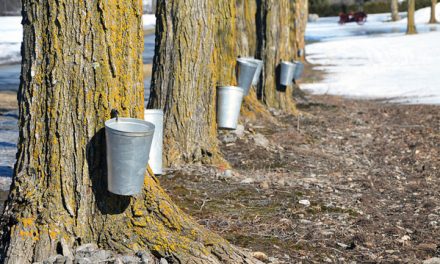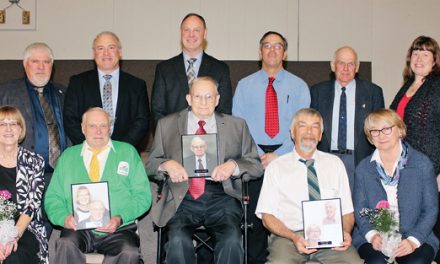By Donald R. Good, P.Ag.
AgriNews Staff Writer
JASPER – On July 23 the Eastern Ontario Crop Advisory Committee held it’s Agspray Expo on a farm near Jasper, Ontario. This year focused on Innovation and Best Practices in Agricultural Spraying. The weather fully co-operated and everyone had a great day. Approximately 150 people attended to learn about the latest in spray equipment and watch the demonstrations.
On the equipment side, John Deere Green Tech, Green Lea and Horsch demonstrated their self propelled sprayer equipment. Amazone provided a tractor pulled sprayer more suitable for smaller fields with a significantly lower price tag. Amazone Canada demonstrated a large DJI T150 drone sprayer suitable for field and specialty crop pesticide application. Drones are becoming more popular to apply pesticides for obvious reasons. The drone system appeared to work very well; however, I believe the adoption of drone technology in Eastern Ontario is still in its early stages.
The presentation that caught my eye was a loading system that allowed for closed transfer of the chemical pesticide from container to the spray tank. It has been nearly 60 years since I first became involved with the pesticide industry. I graduated from Kemptville Agricultural School (as it then was) in April of 1966 and immediately went to work as a pesticide researcher for a large chemical company in Ontario. One way or another I have been involved with all aspects of pesticides ever since and even back then spillage during pesticide transfer was a major concern. Not only is it an environmental hazard but spillage does not help the crop. It is also a time consuming process to open cans, remove the seal and dump the pesticide in the tank. The machine on site was the QuickDraw Tender System that quickly and completely transferred the pesticide to the tank by an enclosed system. We were advised that the Canadian Pest Management Regulatory Agency is mandating closed transfer systems on some pesticide labels. If it is mandated on the label, failure to use the proper enclosed system would be a violation of the federal Pest Control Products Act. I remember conducting a lot of field multiple plot research on carbofuran insecticide back in the sixties. This insecticide is extremely dangerous, both oral and dermal, and a closed transfer system would have made its use a lot safer. I have reviewed the label for Bayer’s Furadan 480F product containing this active ingredient and a closed system is approved but it is not mandated.
Spray draft was a major issue back in the sixties and still is today. Much of the new technology in sprayers is designed to control drift. The new technology is also designed to get the droplets of pesticide spray on the crop where it is needed and not on the field off site. All of the spray machines on demonstration achieved this goal by various computer programs and nozzle innovation. The big machines were impressive and each machine had its own capabilities and limitations. The presentation by Mike Ledebuhr a spray application consultant with Application Insights LLC emphasised the need to manage travel speed, nozzle type, boom height, wind and other factors to keep the pesticide on the crop where it is needed. The most important factor is droplet size. I have been involved with many difficult court cases involving pesticide spray drift and agree with Mike controlling drift is extremely important.
The companies referred to all have websites where a farmer can obtain more detailed information on their impressive machines and obtain contact information. After 6 decades of being involved with pesticides, I can certainly testify to witnessing significant advances in sprayer methods and technology.












